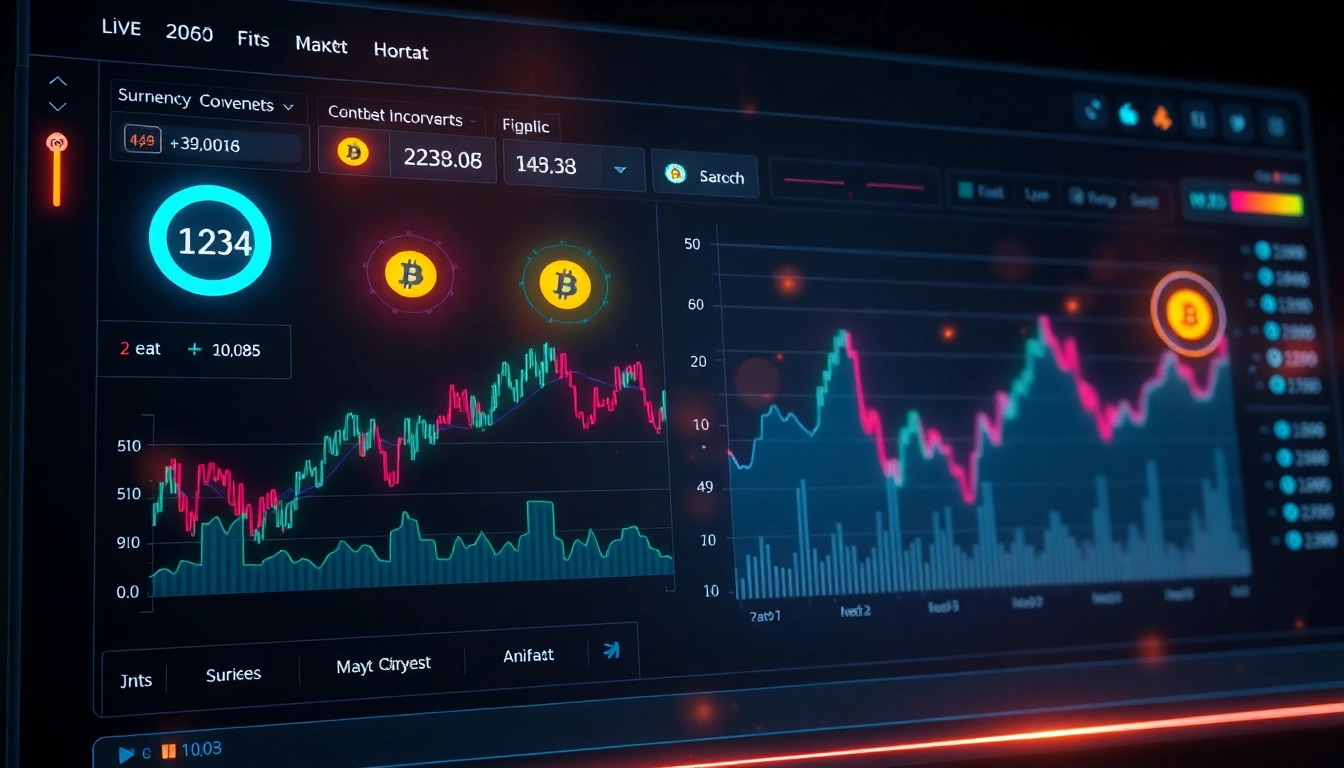
Comprehensive Cryptocurrency Market Update: Key Trends and Insights for Investors
Introduction to Cryptocurrency Market Dynamics
The cryptocurrency landscape continues to evolve at a rapid pace, driven by a complex interplay of market forces, technological advancements, regulatory developments, and macroeconomic trends. Staying ahead in such a volatile environment requires a deep understanding of the core factors influencing prices and market movements. Investors and traders need real-time, accurate information to make informed decisions, especially as digital assets become increasingly integrated into the broader financial ecosystem. For ongoing insights and timely updates, exploring comprehensive resources like the Cryptocurrency Market Update can provide valuable guidance.
Current Cryptocurrency Market Trends
Bitcoin and Ethereum Price Movements
Leading cryptocurrencies such as Bitcoin and Ethereum remain focal points for market sentiment and strategic trading. Recently, Bitcoin has demonstrated resilience, maintaining a ‘full bull’ scenario pending the preservation of its critical 200-week trendline. Ethereum, meanwhile, has experienced periods of stabilization, but slowdowns in Ether’s rally suggest potential consolidations before the next breakout. The unfolding dynamic underscores the importance of monitoring technical levels and macro catalysts that influence these flagship assets.
Emerging Altcoins and Market Cap Shifts
Beyond Bitcoin and Ethereum, new altcoins continue to emerge, driven by innovations in decentralized finance (DeFi), non-fungible tokens (NFTs), and blockchain scalability solutions. Market capitalization shifts among these assets reflect investor interest and technological adoption. Notably, recent surges in smaller tokens often coincide with new project launches, partnerships, or strategic upgrades, highlighting the need for comprehensive on-chain analysis to gauge true value versus hype.
Impact of Regulatory Developments on Prices
Regulatory environments remain one of the most significant influences on crypto prices. Recently, U.S. SEC actions and potential partnerships involving gaming companies like Meta hint at increased scrutiny and eventual mainstream integration. Regulatory clarity or ambiguity can cause sharp volatility; for example, cautious movements following SEC announcements have led to temporary dips. Staying updated with policy changes and legal frameworks is crucial for mitigating risks and identifying long-term opportunities.
Analyzing Market Data and Indicators
Technical Analysis Tools for Crypto Trading
Technical analysis remains indispensable for crypto traders. Tools such as moving averages, RSI (Relative Strength Index), MACD (Moving Average Convergence Divergence), and Fibonacci retracements enable traders to identify trend directions and potential reversal points. In particular, the 200-week trendline serves as a significant support level for Bitcoin, with many analysts watching for a full bull scenario if it holds. These techniques, coupled with volume metrics, help formulate strategic entry and exit points.
On-Chain Metrics and Their Significance
On-chain data offers granular insights into investor behavior and network health. Metrics such as active addresses, transaction volume, hash rate, and coin supply distribution reveal underlying market sentiment. For instance, rising on-chain activity often precedes bullish price action, while increasing coin dormancy can indicate accumulation phases. Analyzing these indicators helps anticipate potential reversals and confirm technical signals.
Sentiment Analysis and Investor Behavior
Market sentiment provides a psychological backdrop that influences short-term volatility. Platforms employing AI-powered sentiment analysis aggregate social media chatter, news headlines, and community discussions to gauge market mood. A shift from fear to greed, or vice versa, often precedes significant price movements. Incorporating sentiment metrics into trading strategies enhances timing accuracy and risk management.
Future Outlook and Investment Opportunities
Predictions Based on Historical Trends
Historical data indicates cyclical patterns, where Bitcoin’s halving events have historically triggered bullish phases followed by periods of correction. Current technical signals suggest a potential upward trajectory if key support levels are maintained. Moreover, the expansion of institutional interest and integration into traditional finance increases the likelihood of sustained growth, especially with innovations like DeFi and blockchain interoperability gaining traction.
Potential Risks and Mitigation Strategies
The crypto market is fraught with risks including regulatory crackdowns, technological failures, exchange hacks, and macroeconomic shocks. Diversification across multiple assets, stringent security protocols, and continuous monitoring of regulatory developments are essential for risk mitigation. Establishing clear exit strategies and employing stop-loss orders can further safeguard investments against sudden downturns.
Guidelines for Building a Resilient Crypto Portfolio
Constructing a resilient portfolio involves a balanced approach combining core assets like Bitcoin and Ethereum with promising altcoins. Allocating capital based on risk tolerance, maintaining liquidity for opportunistic trades, and periodically rebalancing positions align with sound investment principles. Keeping abreast of technological upgrades, partnership announcements, and macroeconomic policy shifts supports adaptive strategy formulation.
Practical Tips for Staying Informed
Utilizing Reliable Market Update Sources
Accurate decision-making hinges on accessing trustworthy sources. Regularly updating oneself with comprehensive market reports, reputable news outlets, and expert analyses can prevent misinformation. Platforms like the Cryptocurrency Market Update provide real-time insights, technical breakdowns, and macroeconomic context integral for timely trades.
Leveraging News and Social Media for Investment Decisions
Social media, especially Twitter and Reddit, plays a pivotal role in disseminating market-moving news. Following credible analysts, project teams, and macroeconomic commentators allows traders to anticipate volatile moves. However, due diligence is vital to differentiate between genuine information and hype or misinformation.
Integrating Market Data into Trading Strategies
Combining technical indicators, on-chain metrics, and sentiment analysis into a cohesive trading plan enhances robustness. Automated trading bots and alert systems can be configured for predefined signals, enabling quicker reaction times. Regular performance review and strategy refinement are key to adapting to evolving market conditions.


